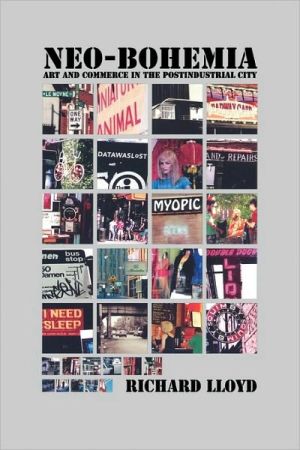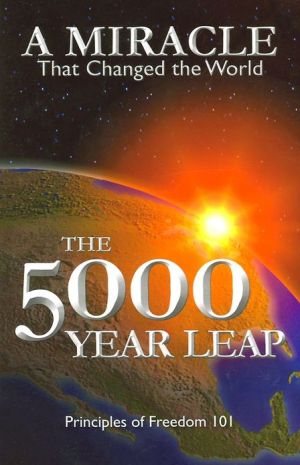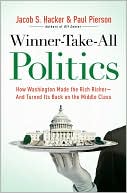Neo-Bohemia: Art and Commerce in the Postindustrial City
A common sight in American cities today is the local bohemia, filled with hipsters, funky stores, picturesque dive bars, and aspiring artists. Yet not so long ago, these sorts of districts were relatively rare, and one had to travel to San Francisco or Greenwich Village to experience bohemia in all its glory. The last two decades, however, has seen the emergence of a mass alternative nation, populated by struggling screenwriters, oddball thrift stores, indie rockers, and thousands of coffee...
Search in google:
A common sight in American cities today is the local bohemia, filled with hipsters, funky stores, picturesque dive bars, and aspiring artists. Yet not so long ago, these sorts of districts were relatively rare, and one had to travel to San Francisco or Greenwich Village to experience bohemia in all its glory. The last two decades, however, has seen the emergence of a mass alternative nation, populated by struggling screenwriters, oddball thrift stores, indie rockers, and thousands of coffee houses. It has sprouted in locales ranging from San Diego to Seattle, Athens to Cleveland. In Neo-Bohemia, Richard Lloyd asks, how did bohemia become such an ordinary thing? In the past, bohemia was always a small and embattled refuge for society's weirdos, its starving artists, its avant-garde, and its dope fiends. Now, not only is bohemia an established district in every medium-sized city, it drives up real estate prices and gets promoted as a lifestyle amenity. In this witty exploration of one of America's most successful new bohemias, Chicago's Wicker Park--site of the hip film High Fidelity and launching pad of alt rock stars like Liz Phair--Lloyd shows that bohemia's new status is a result of broader social and economic transformations. Cities like Chicago that are trying to shift from the industrial to the postindustrial era no longer rely on smokestack industries. Rather, they crave "creative" industries like media, tourism, advertising, and design, and hence have a newfound tolerance for nonconformists. As Neo-Bohemia shows, bohemia's creatures of the night, flaunting thrift store duds, piercings, and tribal tattoos, are the perfect labor force for these new industries. They are very creative, yet willing to work odd hours on a freelance basis. And the success of Wicker Park has only attracted more aspiring artists ready to toil in the information and tourism sectors at relatively low wages. Neo-Bohemia is essential reading for anyone trying to get a handle not just on the growing prominence of alternative and hipster culture in America, but on how cities are retooling to become players in the information age economy. Publishers Weekly The increasingly intimate but still uneasy relationship between "alternative" cultures and the forces of globalization underlies Vanderbilt professor Lloyd's sparkling ethnographic study of Chicago's hipster enclave Wicker Park. Once the down-at-heel home of Frankie Machine, the junkie protagonist of Nelson Algren's Walk on the Wild Side, it's now the sort of neighborhood where one can look at art, linger over a cafe americano, listen to poetry or indie rock, or be cordially abused by record store clerks straight out of High Fidelity, which was filmed there. Good on the big picture, Lloyd's 10 chapters situate the evolving neighborhood within a complex nexus of commercial and social forces that he calls the "aesthetic economy." But as thorough (and commendably dogma- and jargon-free) as Lloyd is on background, it is in the "field" that he shines, bringing abstract concepts to life with a real feel for the "new economy" bars, galleries and high-tech startups, as well as the often happily exploited people who work in them. Trading high wages for the romance of bohemia, the bartenders, baristas and code punchers of Wicker Park are evolving new codes and values often strikingly at odds with suburban ones, and Lloyd's study gives their evolution a wealth of nuanced human detail. This combination of solid research and a good ear gives Lloyd's book an unusual depth; none of his readers is likely to undertip an eyebrow-studded waitserver anytime soon. 15 b&w photos. (Oct.) Copyright 2005 Reed Business Information.
1Introduction1Pt. IIndustry and art in the modern city2Production and neighborhood213Bohemia47Pt. IIPostindustrial Bohemia4Grit as glamour735Living like an artist996The celebrity neighborhood123Pt. IIIArtists as useful labor7The neighborhood in cultural production1538Making the scene1799The digital Bohemia205Conclusion10The Bohemian ethic and the spirit of flexibility235
\ Publishers WeeklyThe increasingly intimate but still uneasy relationship between "alternative" cultures and the forces of globalization underlies Vanderbilt professor Lloyd's sparkling ethnographic study of Chicago's hipster enclave Wicker Park. Once the down-at-heel home of Frankie Machine, the junkie protagonist of Nelson Algren's Walk on the Wild Side, it's now the sort of neighborhood where one can look at art, linger over a cafe americano, listen to poetry or indie rock, or be cordially abused by record store clerks straight out of High Fidelity, which was filmed there. Good on the big picture, Lloyd's 10 chapters situate the evolving neighborhood within a complex nexus of commercial and social forces that he calls the "aesthetic economy." But as thorough (and commendably dogma- and jargon-free) as Lloyd is on background, it is in the "field" that he shines, bringing abstract concepts to life with a real feel for the "new economy" bars, galleries and high-tech startups, as well as the often happily exploited people who work in them. Trading high wages for the romance of bohemia, the bartenders, baristas and code punchers of Wicker Park are evolving new codes and values often strikingly at odds with suburban ones, and Lloyd's study gives their evolution a wealth of nuanced human detail. This combination of solid research and a good ear gives Lloyd's book an unusual depth; none of his readers is likely to undertip an eyebrow-studded waitserver anytime soon. 15 b&w photos. (Oct.) Copyright 2005 Reed Business Information.\ \








